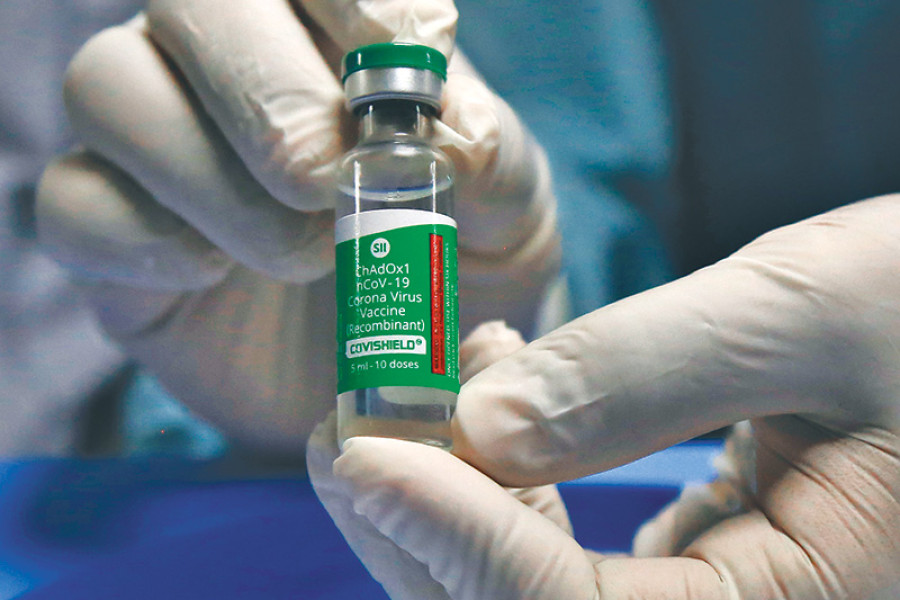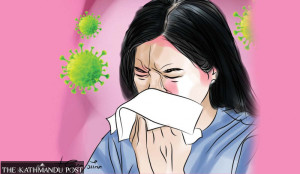Health
COVAX jabs supply to fall short of forecast
WHO likely to provide only 380,000 doses of 2.25 million it was expected to deliver to Nepal in the first phase of scheme.
Arjun Poudel
At a time when the government is preparing to launch the second phase of the immunisation campaign against the Covid-19, the World Health Organization has informed Nepali officials that it will only provide 13 percent of the vaccine doses it had earlier forecasted to provide Nepal through its COVAX facility in the first phase of the programme.
While the decision to provide 380,000 doses (against the 2,256,000 forecasted earlier this month), may not affect the planned vaccination drive, the new development makes it necessary for the government to procure additional doses of the vaccine on its own to “remain on the safe side”, officials say
“We were informed that the World Health Organization will provide us only 380,000 doses in the first phase of the COVAX programme,” an official at the Ministry of Health and Population, told the Post, asking not to be named. “Due to short supply of vaccines, the UN health agency could not meet its forecast.”
The Health Ministry is preparing to launch the second phase of the vaccination drive from March 7. As the doses the government expected to receive from the WHO were one of the main sources of vaccine for the campaign, the government now needs to procure additional doses to run the fresh campaign smoothly, officials say.
“I have not seen a letter from the UN’s health agency but have been informed that they (WHO) could not supply all doses immediately, due to short supply,” said Dr Jhalak Sharma, chief of Child Health Section, at the Family Welfare Division under the Department of Health Services. “We will have to procure more doses at the earliest to remain on the safe side for the second phase of the immunisation campaign.”
The ministry has decided to immunise all eligible people above 55 years under the second phase of the drive as death rate is comparatively high in the age group compared to others. The estimated population of the age group is around 3.7 million.
The government recently procured two million doses of the Covishield vaccine produced by Serum Institute of India. Of the two million doses, Serum has already supplied one million doses and officials say that the company will supply the remaining million doses within a few days.
Similarly, the government has over half million doses in stock from the one million doses provided by India under grant assistance on January 21. China has also decided to provide 500,000 doses of its BBIBP-CorV vaccine developed by the Beijing Institute of Biological Products Co Ltd (BIBP) under Sinopharm.
“We will have around 3.4 million doses available for the second round of immunisation. This will be sufficient if around 80 percent of the targeted population seek immunisation,” Dr shyam Raj Upreti, coordinator of Covid-19 vaccine advisory committee told the Post. “But officials are also trying to secure another deal to procure additional doses so that even if more than 80 percent of the targetted population decides to take the vaccine, we will not fall short.”
Officials at the Health Ministry say that the World Health Organization has informed that it will supply additional doses only in May. Upreti conceded that it will not be not be easy to immunise all the people of the targeted group from the existing doses secured by the government.
Officials at the Health Ministry said that the government has already requested Serum Institute of India to provide an additional five million doses of Covishield. Covishield is the preferred choice of the authorities in Nepal, as the existing system used in regular immunisation of the children supports the storage and supply.
Covishield vaccines have to be stored in plus temperatures between 2 and 8 degrees Celsius.
“We are awaiting a response from the Serum Institute of India,” Dr Roshan Pokhrel, chief specialist at the Health Ministry, told the Post.
The ministry plans to use the five million doses to administer second doses to people who have already received their first dose. Officials said that a fraction of the five million doses expected to arrive from India may have to be used in the second phase if more than 80 percent of the targetted population seek immunisation.
The WHO has said it will eventually provide 12 million doses of Covishield under its COVAX programme, sufficient for six million people (around 20 percent of Nepal’s population).
Meanwhile, the Child Health Section said that all necessary preparations for the second phase of the immunisation drive has been completed.
“We have already started to send vaccines to the provincial storage facilities,” Sharma, chief of the section, told the Post. “Vaccines will reach all provincial storages in a couple of days.”




 8.12°C Kathmandu
8.12°C Kathmandu














